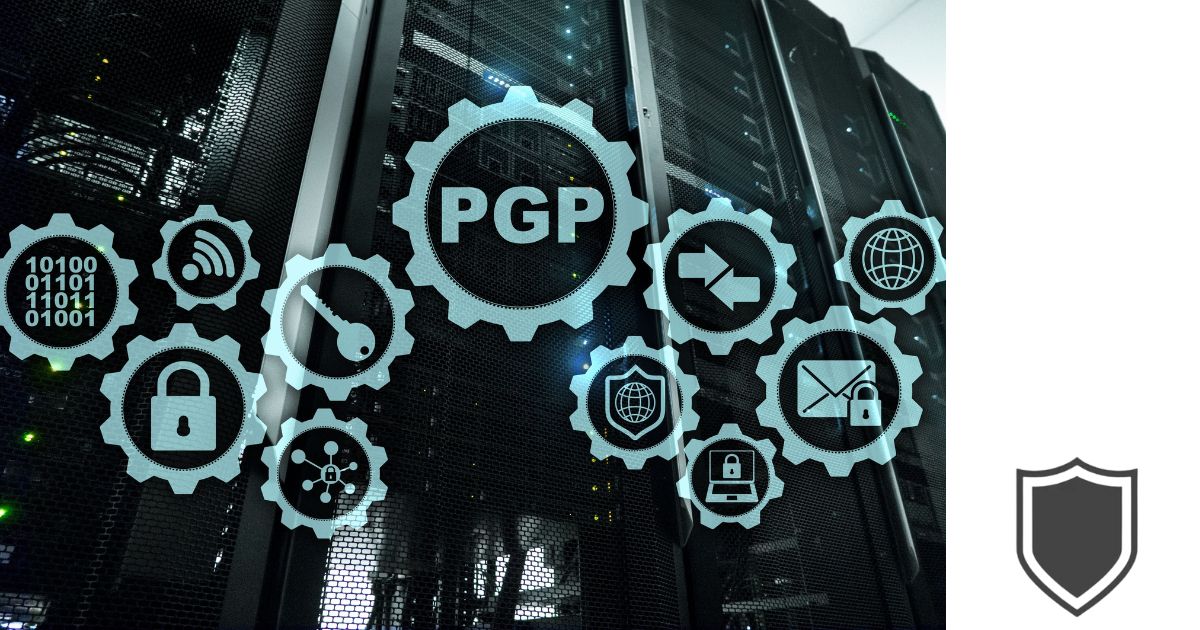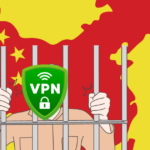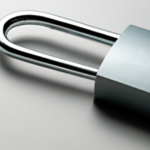In the current digital age, protecting data is critically important. Basic passwords? They are the rudimentary instruments of online security. What actually transforms safety measures? PGP for data encryption.
Despite its humble-sounding moniker, “Pretty Good Privacy”, PGP for encryption has set a new gold standard in the realm of digital protection. Dive with us into the intricate world of PGP, and discover how this encryption method isn’t just “pretty good” but phenomenal.
Beyond mere passwords, this is the future of fortified data.
Key Takeaways
- PGP encryption is a widely used encryption method that provides confidentiality, integrity, and authenticity of data.
- PGP encryption uses a combination of symmetric and asymmetric encryption to encrypt and decrypt messages.
- PGP encryption works by using a public key and a private key to encrypt and decrypt messages.
Table of Contents
Understanding PGP Encryption

PGP (Pretty Good Privacy) is a widely used encryption tool that provides secure communication over the internet. It is an open-source software that uses public-key encryption to encrypt and decrypt messages. In this section, we will discuss the basics of PGP for encryption and how it works.
Public-key Encryption
PGP uses a public-key encryption algorithm to encrypt and decrypt messages. In public-key encryption, two keys are used: a public key and a private key. The public key is used to encrypt messages, while the private key is used to decrypt them. The public key is freely available to anyone, while the private key is kept secret.
PGP Encryption Process
When a user wants to send an encrypted message to another user, they use the recipient’s public key to encrypt the message. The recipient can then use their private key to decrypt the message. This ensures that only the intended recipient can read the message.
PGP also uses digital signatures to verify the authenticity of messages. A digital signature is created using the sender’s private key and is attached to the message. The recipient can verify the signature using the sender’s public key to ensure that the message has not been tampered with.
PGP Compatibility
PGP is compatible with a wide range of email clients, including Microsoft Outlook, Mozilla Thunderbird, and Apple Mail. It also works with popular instant messaging services like WhatsApp and Signal.
Key Components of PGP Encryption
Let’s take a look at the key components of PGP encryption.
Public Key
A public key is used to encrypt messages that are intended for a specific recipient. This key can be shared with anyone, and it is used to encrypt the message before it is sent. The recipient can then use their private key to decrypt the message. Public keys are often shared through key servers, and they can also be exchanged in person.
Private Key
A private key is used to decrypt messages that have been encrypted with the corresponding public key. This key is kept secret and should not be shared with anyone. If a private key is lost or compromised, it can lead to a security breach. Make sure to keep private keys safe and secure.
Digital Signature
A digital signature is a way to verify the authenticity of a message or document. It is created using the sender’s private key, and it can be verified using the sender’s public key. Digital signatures are used to ensure that a message has not been tampered with during transmission and that it was indeed sent by the claimed sender.
Web of Trust
The web of trust is a decentralized trust model used in PGP encryption. It allows users to verify the authenticity of public keys by relying on a network of trusted individuals. When a user signs another user’s public key, they are vouching for its authenticity. This creates a chain of trust that can be used to verify the authenticity of public keys.

The PGP Encryption Process
PGP (Pretty Good Privacy) is a popular encryption tool that uses a combination of symmetric-key and public-key encryption to secure data. In this section, we will discuss the PGP encryption process, which involves key generation, encryption, and decryption.
Key Generation
The first step in the PGP encryption process is to generate a public-private key pair. This is done using a key generation tool, which creates two keys: a public key and a private key. The public key is shared with others, while the private key is kept secret. Anyone can use the public key to encrypt a message, but only the person with the private key can decrypt it.
Encryption
To encrypt a message using PGP, we first need to obtain the recipient’s public key. Once we have the public key, we can use it to encrypt the message. PGP uses a hybrid encryption scheme, which means that it uses both symmetric-key and public-key encryption. First, it generates a random symmetric key, which is used to encrypt the message. Then, it encrypts the symmetric key with the recipient’s public key and sends both the encrypted message and the encrypted symmetric key to the recipient.
Decryption
To decrypt a message that has been encrypted with PGP, we need the recipient’s private key. The recipient uses their private key to decrypt the symmetric key, which is then used to decrypt the message. This two-step process ensures that the message can only be read by the intended recipient.
PGP Encryption Standards
Now let’s explore the PGP encryption standards that are used to ensure the security of data.
OpenPGP
OpenPGP is an open-source encryption standard that is based on PGP. It is widely used for encrypting emails, files, and other sensitive data. OpenPGP uses a combination of symmetric and asymmetric encryption techniques to provide a high level of security. It also includes features such as digital signatures and key management.
OpenPGP is supported by a number of software applications, including GnuPG, Enigmail, and Thunderbird. These applications allow users to encrypt and decrypt messages and files using OpenPGP. OpenPGP is also compatible with other encryption standards, such as S/MIME.
RFC 4880
RFC 4880 is a standard that defines the OpenPGP message format. It specifies how messages are encrypted, decrypted, and signed using OpenPGP. RFC 4880 also defines the key management protocols used by OpenPGP.
RFC 4880 is an important standard for ensuring the security of OpenPGP messages. It provides a clear and standardized way for messages to be encrypted, decrypted, and signed. This makes it easier for software developers to implement OpenPGP support in their applications.
Benefits of PGP Encryption
PGP encryption offers several benefits for securing sensitive information and communication. Here are some of the key advantages:
1. Confidentiality
PGP encryption uses a combination of symmetric and asymmetric encryption to ensure that only authorized parties can read the encrypted message. This means that even if the message is intercepted, it cannot be read by anyone without the decryption key. This provides a high level of confidentiality for sensitive information.
2. Integrity
PGP encryption also includes a digital signature that ensures the integrity of the message. This means that the recipient can be sure that the message has not been tampered with during transmission. This is particularly important for business and legal documents where any changes to the content could have serious consequences.
3. Authentication
PGP encryption provides authentication by verifying the identity of the sender. This ensures that the recipient can be confident that the message is from the intended sender and not an imposter. This is important for preventing phishing attacks and other forms of fraud.
4. Flexibility
PGP encryption can be used to secure various types of communication, including email, instant messaging, and file transfers. This makes it a versatile tool for protecting sensitive information in different contexts.
5. Open Standards
PGP encryption is based on open standards, which means that it is widely supported by different software and platforms. This makes it easy to use and integrate into existing workflows.
Overall, PGP encryption provides a robust and flexible solution for securing sensitive information and communication. By using PGP encryption, we can protect our data from unauthorized access and ensure the integrity and authenticity of our messages.
Limitations of PGP Encryption
While PGP encryption is a powerful tool for securing sensitive information, it does have some limitations that users should be aware of.
Firstly, PGP encryption only protects the contents of the message or file being sent. It does not protect the metadata associated with the communication, such as the sender and recipient information, subject line, or timestamps. This means that someone monitoring network traffic could potentially still determine who is communicating with whom, even if they cannot see the contents of the messages.
Secondly, PGP encryption relies on the security of the user’s private key. If an attacker gains access to the private key, they can decrypt any messages that have been encrypted with the corresponding public key. Therefore, it is crucial to keep the private key secure and to use strong passwords or passphrases to protect it.
Thirdly, PGP encryption is not foolproof and can be vulnerable to certain types of attacks. For example, a determined attacker could potentially intercept and modify an encrypted message before it reaches its intended recipient, or they could launch a brute force attack on the encryption key to try to decrypt the message.
Despite these limitations, PGP encryption remains a valuable tool for protecting sensitive information and maintaining privacy online. By understanding its limitations and taking appropriate precautions, users can make the most of this powerful encryption technology.
Best Practices for PGP Encryption
When it comes to PGP encryption, there are a few best practices that can help ensure the security of your communications. Here are some tips to keep in mind:
Use a Strong Passphrase
The passphrase you use to encrypt your PGP key is one of the most important factors in ensuring the security of your communications. Make sure to choose a strong passphrase that is at least 20 characters long and includes a mix of upper and lowercase letters, numbers, and special characters. Avoid using easily guessable information like your name or birthdate.
Verify Keys and Signatures
Before trusting a PGP key, it’s important to verify that it belongs to the person or organization you think it does. This can be done by checking the key’s fingerprint and comparing it to a trusted source, such as a keyserver or the key owner’s website. Additionally, you should verify any signatures on the key to ensure that they were made by trusted parties.
Keep Your Private Key Secure
Your PGP private key is the key to decrypting any messages that are sent to you, so it’s important to keep it secure. Store your private key in a safe location, such as an encrypted USB drive or a hardware wallet. Avoid sharing your private key with anyone, and make sure to use a strong passphrase to encrypt it.
Regularly Update Your Keys
It’s a good idea to regularly update your PGP keys to ensure that they are still secure. This can be done by creating a new key pair and revoking the old one, or by simply updating the expiration date on your existing key. Additionally, if you suspect that your private key has been compromised, you should revoke it immediately and create a new one.
By following these best practices, you can help ensure the security of your PGP communications. Remember to always be vigilant and stay up-to-date on the latest security best practices to keep your communications safe.
Final Word | PGP for encryption
So how do we actually do something with PGP, like send an email?
Let’s walk through it:
To send a PGP encrypted email through Gmail, you can use a browser extension such as Mailvelope. Mailvelope is a free and open-source PGP encryption extension for Chrome and Firefox.
Here are the steps on how to send an email through PGP and Gmail using Mailvelope:
- Install Mailvelope from the Chrome Web Store or Firefox Add-ons website.
- Create a new email in Gmail.
- Click the Mailvelope icon in the Gmail toolbar.
- Select the recipient’s public key from your Mailvelope key ring.
- Click the “Encrypt” button.
- Sign the email with your private key.
- Click the “Send” button.
That’s it!
Navigating the vast universe of online security can be daunting. However, when it comes to robust data protection, PGP for encryption stands tall. It’s more than just a fancy name—it’s the future safeguarding our data deserves.
As we’ve journeyed through its mechanics and applications, it’s evident that PGP isn’t just “pretty good”; it’s essential. So, as you look to the horizon of digital safety, remember: passwords alone aren’t enough.
The gold standard? Undoubtedly, it’s PGP for encryption. Safe browsing!
PGP for Encryption FAQs
What is PGP and how does it work?
PGP stands for Pretty Good Privacy, which is a data encryption and decryption tool used to protect sensitive information. PGP works by using a combination of public and private keys to encrypt and decrypt data. The sender uses the recipient’s public key to encrypt the message, which can only be decrypted by the recipient using their private key. This ensures that only the intended recipient can read the message.
What are the benefits of using PGP for encryption?
PGP provides several benefits for encrypting data. Firstly, PGP encryption ensures that only the intended recipient can read the message, providing secure communication. Secondly, PGP encryption can be used to sign messages, ensuring that the recipient can verify that the message came from the sender. Finally, PGP encryption can be used to encrypt files, providing secure storage of sensitive information.
What are some common PGP encryption tools available for Windows?
There are several PGP encryption tools available for Windows, including Gpg4win, Kleopatra, and PGP Desktop. Gpg4win is a free and open-source encryption software that provides a complete suite of cryptographic software, including PGP encryption. Kleopatra is a free and open-source certificate manager and GUI for GnuPG, which is a free implementation of PGP. PGP Desktop is a commercial encryption software that provides secure email, file encryption, and disk encryption.
How can I encrypt files using PGP?
Encrypting files using PGP is a straightforward process. Firstly, the sender must have the recipient’s public key. The sender can then use PGP encryption software to encrypt the file using the recipient’s public key. The recipient can then use their private key to decrypt the file.
What is the difference between PGP and GPG?
PGP and GPG are both encryption tools that use public and private keys to encrypt and decrypt data. The main difference between PGP and GPG is that PGP is a proprietary encryption tool, while GPG is an open-source encryption tool. Additionally, PGP has a commercial version, while GPG is free and open-source.
Is PGP encryption still considered secure?
PGP encryption is still considered secure, as long as it is used correctly. However, it is important to note that no encryption method is 100% secure, and vulnerabilities can be discovered over time. Therefore, it is important to keep your encryption software up-to-date and use strong encryption keys.
- Amazon Email Phishing: How to Identify and Avoid Scams - May 11, 2025
- Malwarebytes vs McAfee: Decoding the Ultimate Antivirus Battle - May 11, 2025
- Best Antivirus for Windows 10: Expert Recommendations for 2023 - May 11, 2025









